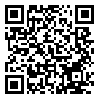Volume 12, Issue 1 (March 2018)
Qom Univ Med Sci J 2018, 12(1): 80-87 |
Back to browse issues page
Download citation:
BibTeX | RIS | EndNote | Medlars | ProCite | Reference Manager | RefWorks
Send citation to:



BibTeX | RIS | EndNote | Medlars | ProCite | Reference Manager | RefWorks
Send citation to:
Rahmani J, Kord Varkaneh H, Yekaninejad M, Dorost Motlagh A R. The Relationship between Body Mass Index and Waist Circumference with Self-Esteem in Iranian Young Men. Qom Univ Med Sci J 2018; 12 (1) :80-87
URL: http://journal.muq.ac.ir/article-1-1314-en.html
URL: http://journal.muq.ac.ir/article-1-1314-en.html
1- Department of Community Nutrition, Faculty of Nutritional Sciences & Dietetics, Tehran University of Medical Sciences, Tehran, Iran.
2- Department of Epidemiology & Biostatistics, Faculty of Public Health, Tehran University of Medical Sciences, Tehran, Iran.
3- Department of Community Nutrition, Faculty of Nutritional Sciences & Dietetics, Tehran University of Medical Sciences, Tehran, Iran. ,mojtaba.rah91@gmail.com
2- Department of Epidemiology & Biostatistics, Faculty of Public Health, Tehran University of Medical Sciences, Tehran, Iran.
3- Department of Community Nutrition, Faculty of Nutritional Sciences & Dietetics, Tehran University of Medical Sciences, Tehran, Iran. ,
Abstract: (5806 Views)
Background and Objectives: Today, the criteria of social acceptance and success, have changed, which affect psychological health, including self-esteem. On the other hand, obesity and overweight have increased in recent decades, which have many effects on the incidence of physical and psychological diseases. This study was carried out with the aim of investigating the relationship between obesity, waist circumference, and body fat with self-esteem in young men.
Methods: In this analytical cross-sectional study, 246 young men were randomly selected according to the inclusion criteria of the study. Demographic indicators were evaluated by a questionnaire, anthropometric measurements by introduced standards, and self-esteem by validated Rosenberg’s questionnaire with Cronbach's coefficient of 0.84. Data were analyzed by one-way analysis of variance, Chi-Square and multivariable logistic regression at a significance level of 0.05.
Results: In this study, 47% of the subjects had moderate self-esteem. In the modified model, the relationship between waist circumference and self-esteem was inverse. The rate of low self-esteem in body mass index groups was significant after adjustment of known confounding factors, and subjects with higher body mass index were more at risk.
Conclusion: Overall, according to the results of this study, the waist circumference, and body mass index have an inverse relationship with self-esteem. Therefore, prospective studies can further help to understand the physiological and psychological relationships of this phenomenon.
Methods: In this analytical cross-sectional study, 246 young men were randomly selected according to the inclusion criteria of the study. Demographic indicators were evaluated by a questionnaire, anthropometric measurements by introduced standards, and self-esteem by validated Rosenberg’s questionnaire with Cronbach's coefficient of 0.84. Data were analyzed by one-way analysis of variance, Chi-Square and multivariable logistic regression at a significance level of 0.05.
Results: In this study, 47% of the subjects had moderate self-esteem. In the modified model, the relationship between waist circumference and self-esteem was inverse. The rate of low self-esteem in body mass index groups was significant after adjustment of known confounding factors, and subjects with higher body mass index were more at risk.
Conclusion: Overall, according to the results of this study, the waist circumference, and body mass index have an inverse relationship with self-esteem. Therefore, prospective studies can further help to understand the physiological and psychological relationships of this phenomenon.
Type of Study: Original Article |
Subject:
تغذیه
Received: 2016/11/23 | Accepted: 2017/01/3 | Published: 2018/03/12
Received: 2016/11/23 | Accepted: 2017/01/3 | Published: 2018/03/12
Send email to the article author
| Rights and permissions | |
 |
This work is licensed under a Creative Commons Attribution-NonCommercial 4.0 International License. |









